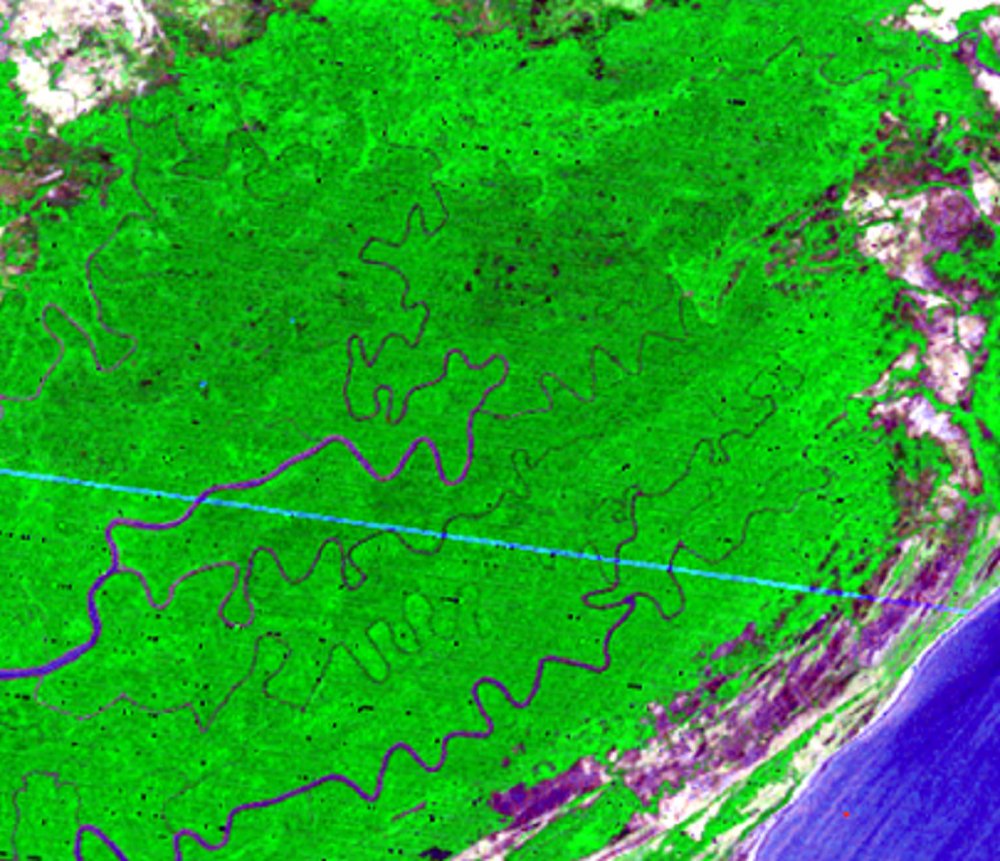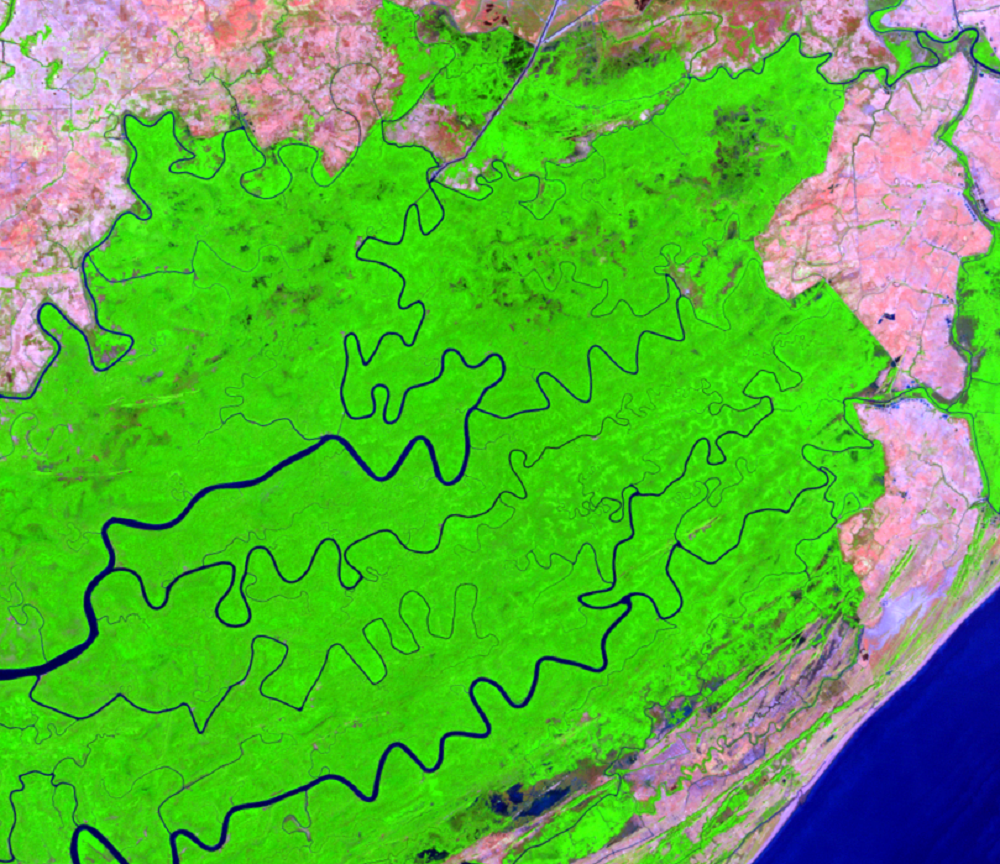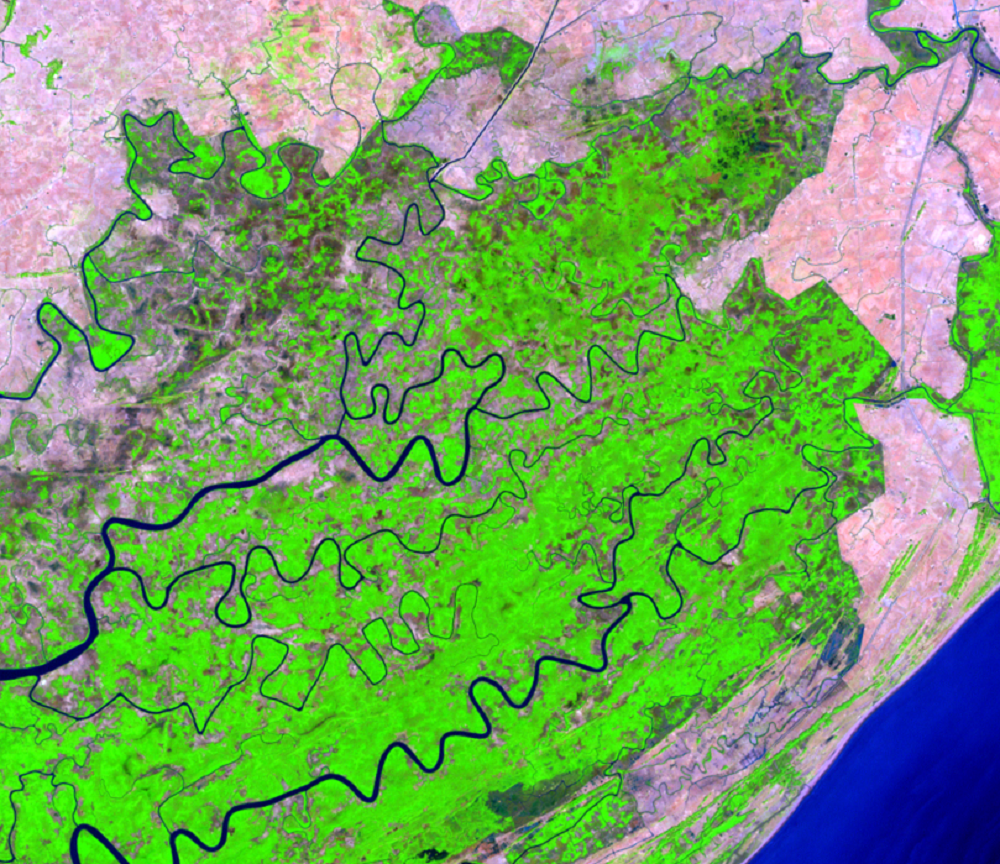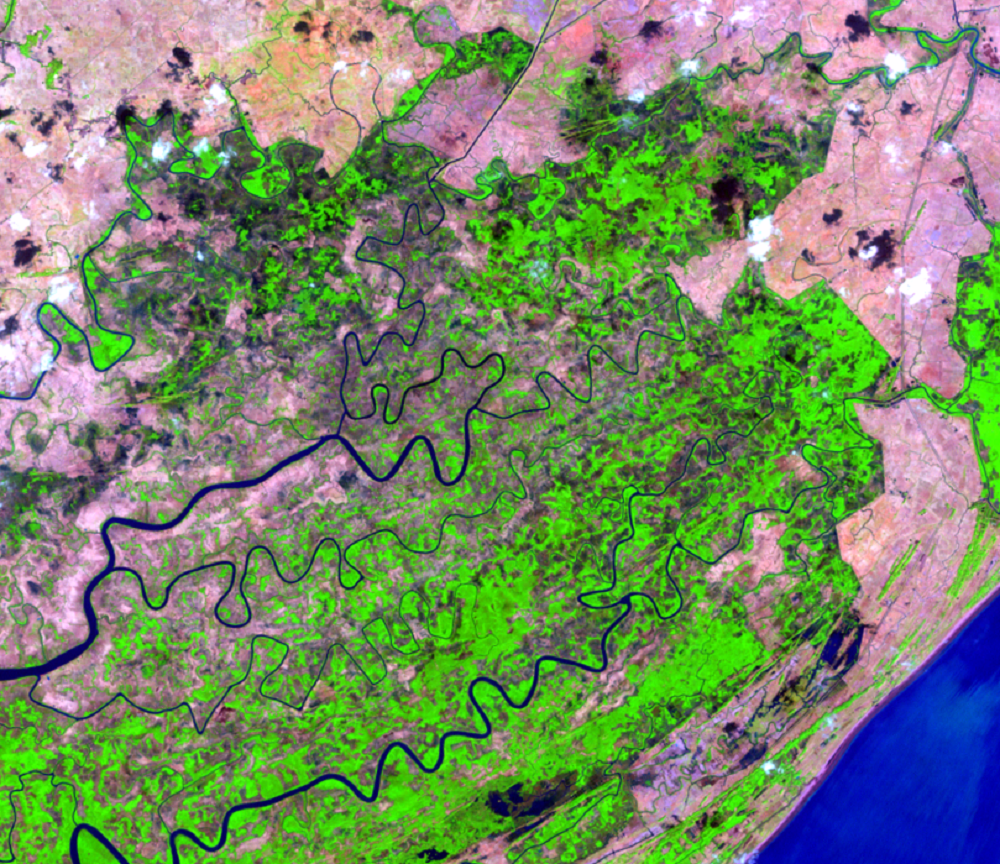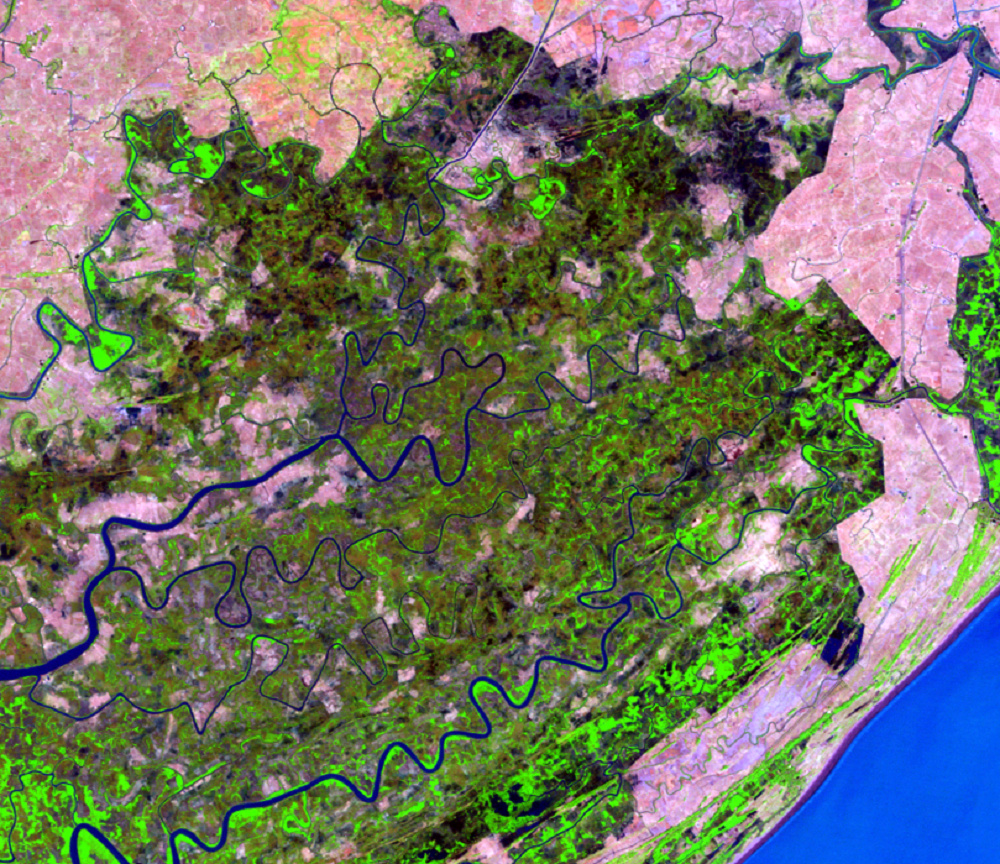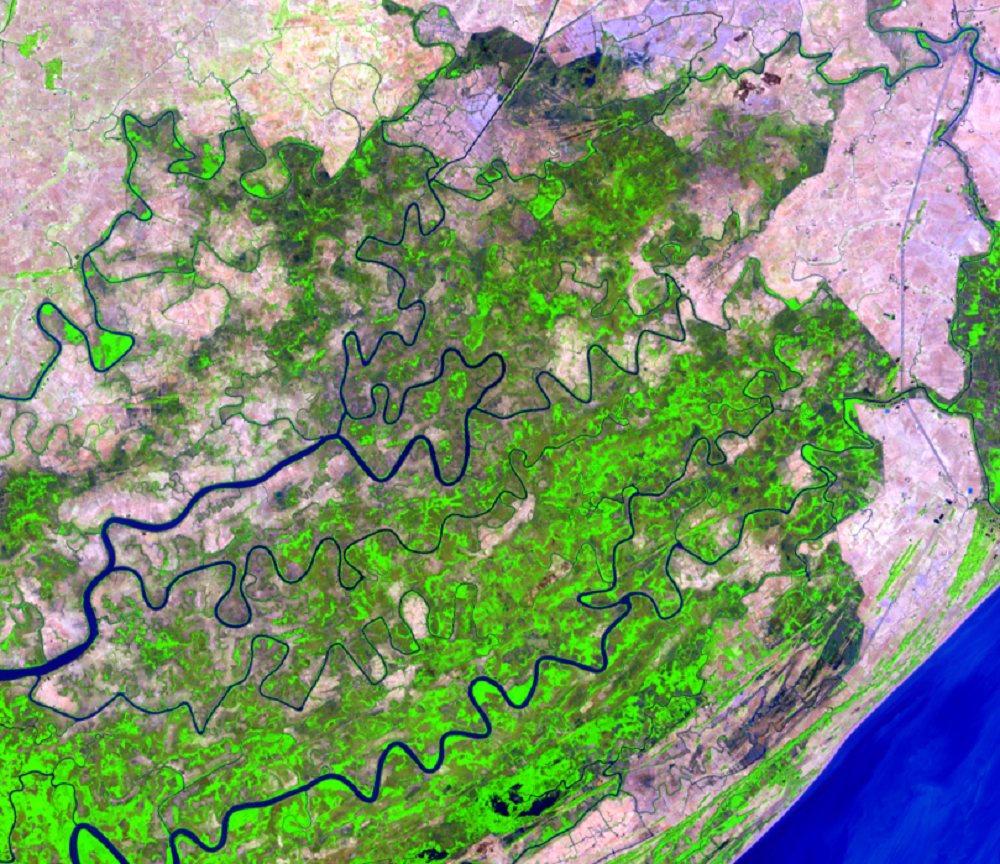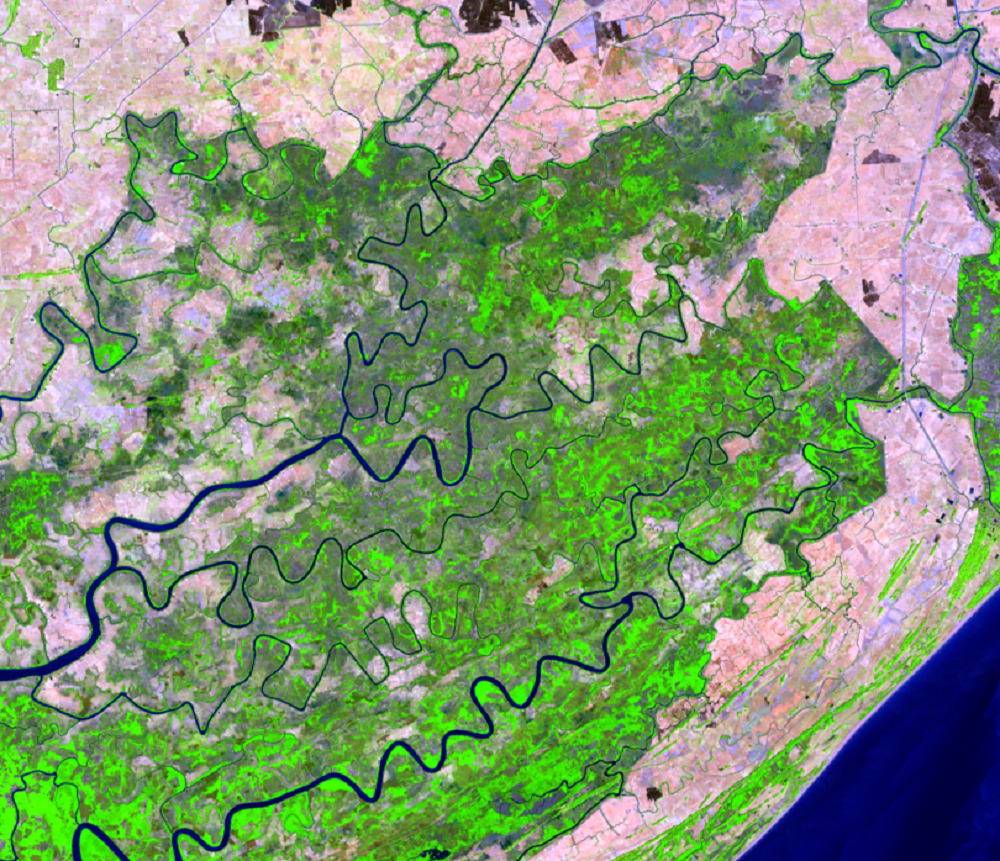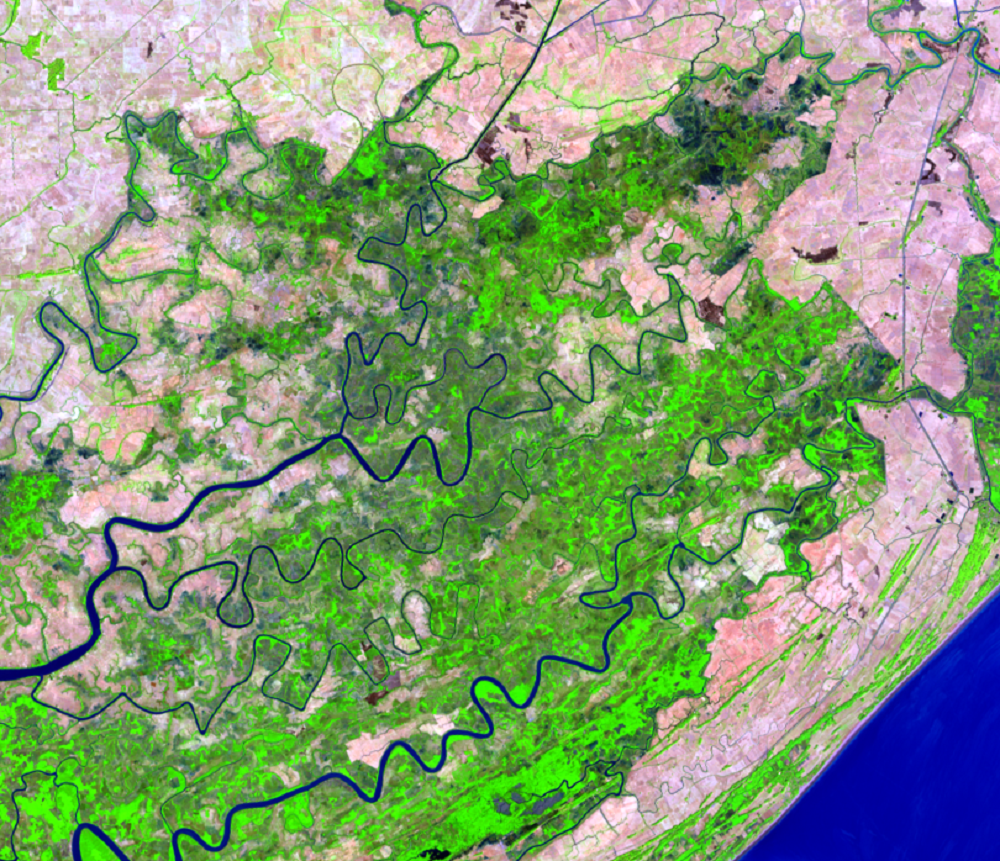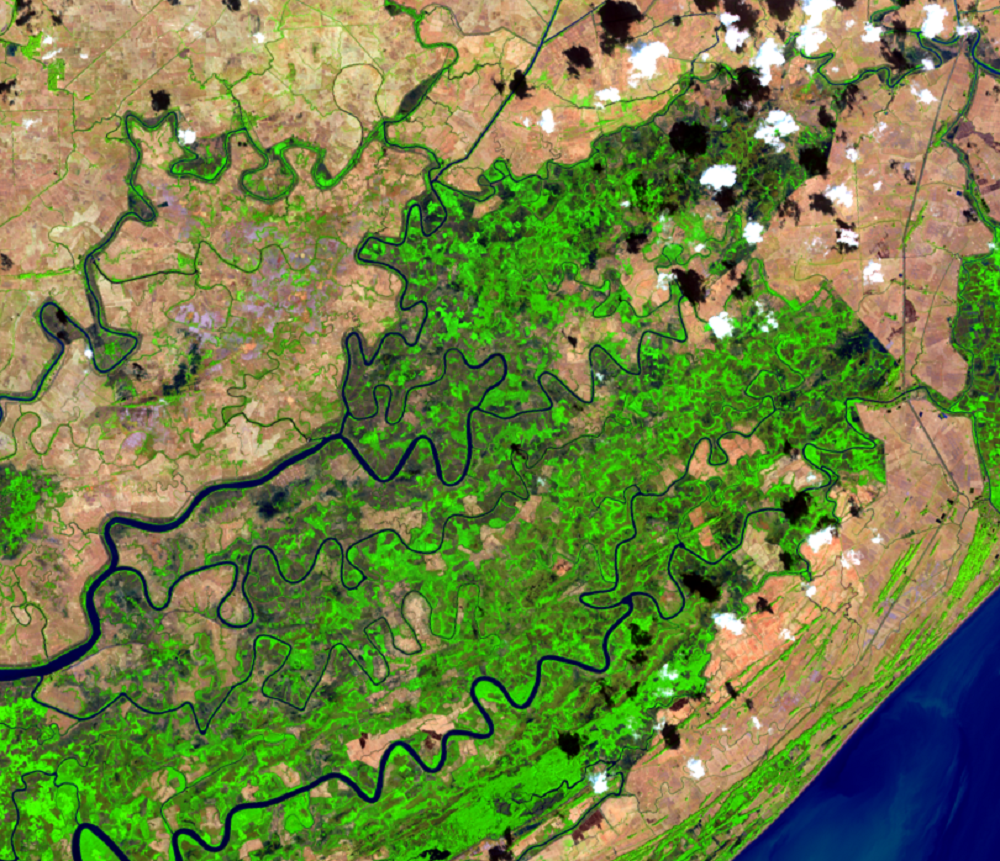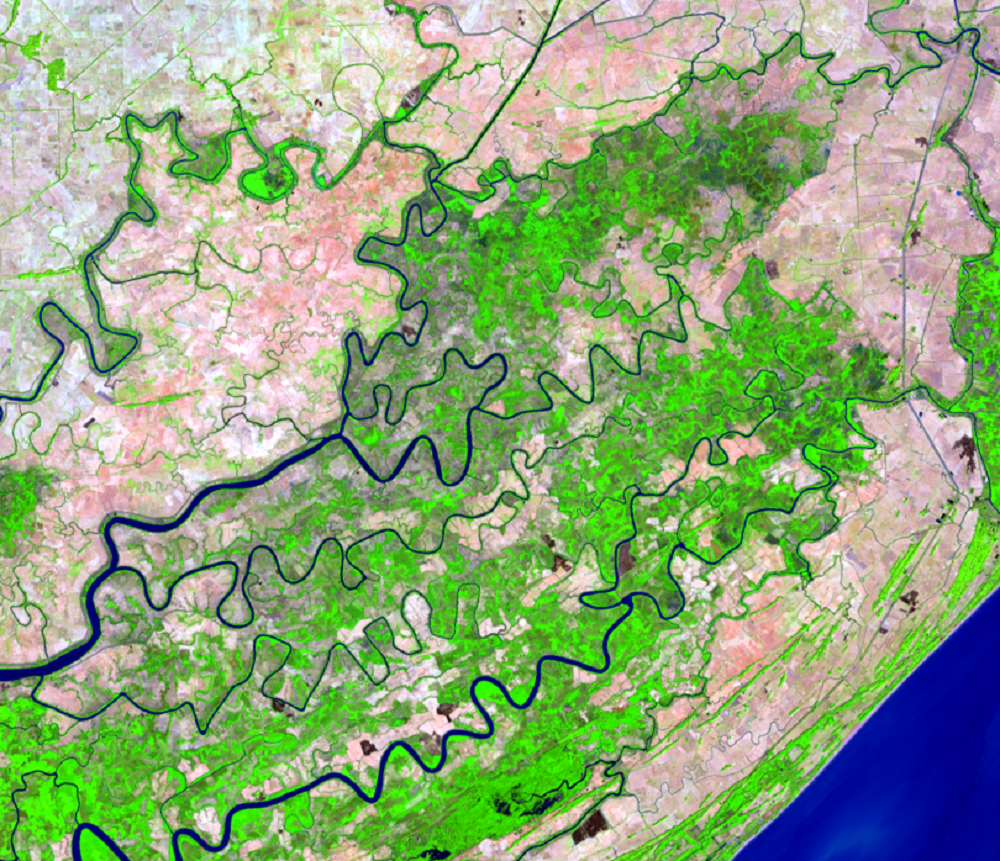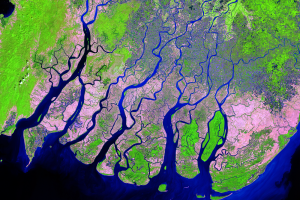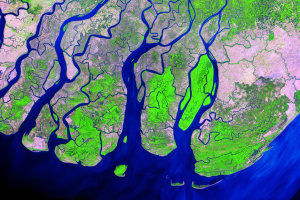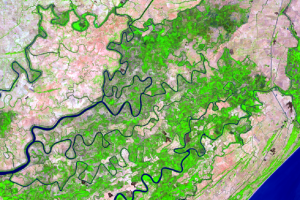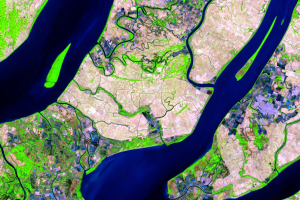
Degradation
Earth Resources Observation and Science (EROS) Center - Earthshots
People are drawn to delta and coastal regions, and about 7.7 million people live on the Ayeyarwady Delta. Deltas can be productive agricultural areas because the soil is rich and the flat terrain and water provide easy access to water-based transportation. The Ayeyarwady Delta produces 35% of Myanmar’s rice. Cutting wood for fuel also contributes to mangrove loss, but most of the deforestation in this delta has been for rice fields.
A more close-up look at the eastern portion of the delta shows this degradation in more detail. As the sequence of images progresses, the bright green of healthy mangrove changes into a mottled green of degraded mangrove.
This mangrove loss could have implications for protecting people on the delta. The delta’s low elevation and flat landscape make it vulnerable to flooding from storm surges, as with Cyclone Nargis in May 2008. The mangrove forests provide a buffer for storm surge.

